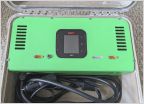-
Welcome to Tacoma World!
You are currently viewing as a guest! To get full-access, you need to register for a FREE account.
As a registered member, you’ll be able to:- Participate in all Tacoma discussion topics
- Communicate privately with other Tacoma owners from around the world
- Post your own photos in our Members Gallery
- Access all special features of the site
Popular Mechanics on Toyota Accelerator Recall
Discussion in 'Off-Topic Discussion' started by brian, Nov 6, 2011.


 What kind of binoculars should I buy?
What kind of binoculars should I buy? Canvas style mesh cargo with smaller than 6x6 openings?
Canvas style mesh cargo with smaller than 6x6 openings? Someone Was Snooping Around My House!!!
Someone Was Snooping Around My House!!! What batteries are compatible with this electric bike?
What batteries are compatible with this electric bike? Adding a capacitor to a fuse for initial loading?
Adding a capacitor to a fuse for initial loading? TW Secret Santa 2020 Wishlist thread
TW Secret Santa 2020 Wishlist thread







































































